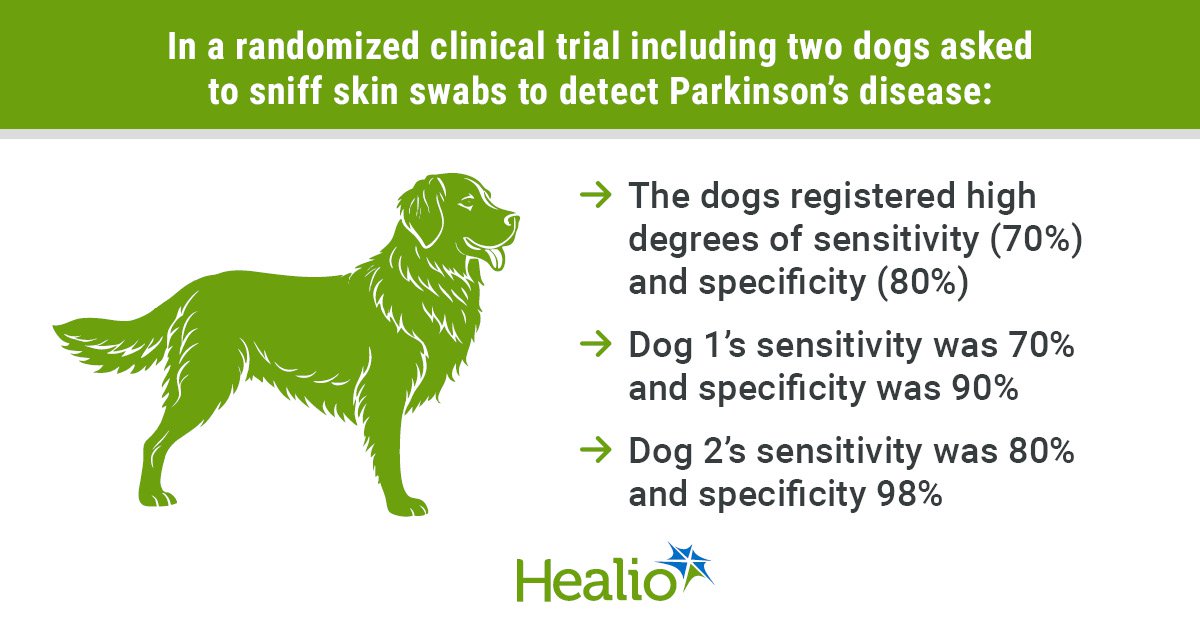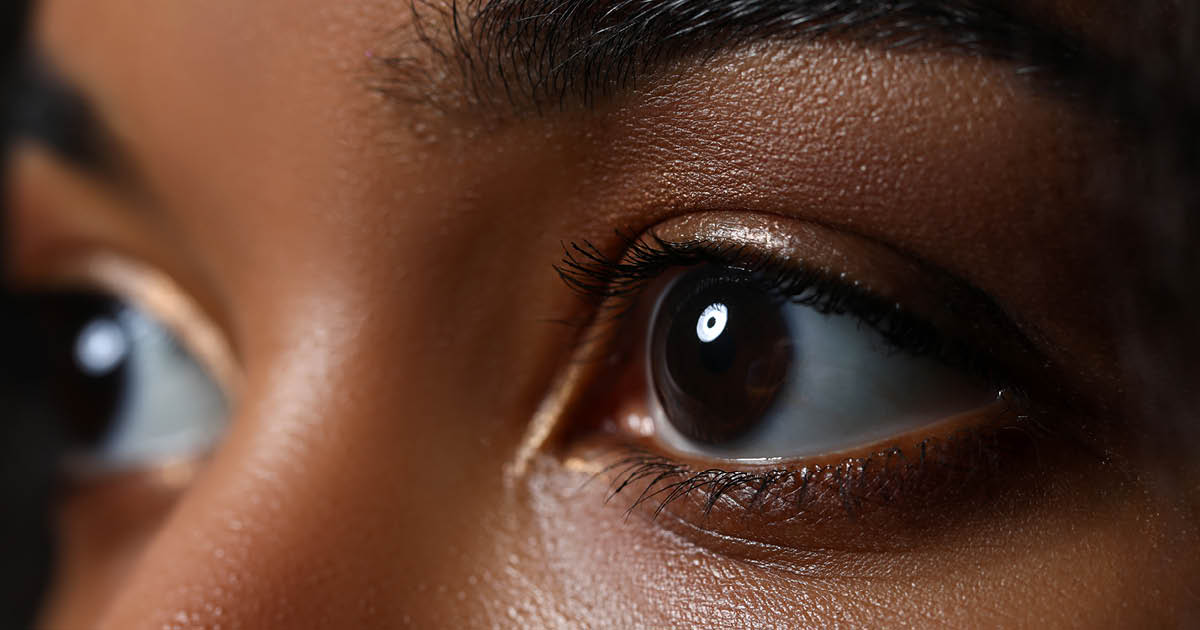August 08, 2025
2 min read
Key takeaways:
- The dogs showed high sensitivity and specificity between samples of patients with Parkinson’s disease and control subjects.
- Agreement between both dogs was higher than predicted for Parkinson’s-positive samples.
Dogs can be trained to sniff out a telltale scent related to Parkinson’s disease from skin swabs with high degrees of certainty, potentially paving the way for non-invasive, biomarker-based detection methods for the condition, data show.
“The current unmet need is to develop a test of clinical utility that can triage the diagnosis of persons with Parkinson’s disease,” Nicola Rooney, PhD, lead study author and associate professor in wildlife health and conservation at Bristol Veterinary School at the University of Bristol, told Healio about the study published in the Journal of Parkinson’s Disease. “The later aim will be to make this to a timely test for those at risk genetically who would benefit from emergent premotor treatments.”

Data were derived from Rooney N, et al. J Parkinsons Dis. 2025;doi:10.1177/1877718X251342485.
As definitive diagnostic testing for PD remains elusive, it is imperative to identify potential biomarkers that may facilitate diagnosis and offer early intervention, Rooney and colleagues wrote.
Using the example of Joy Milne, a woman from the United Kingdom who detected the scent of sebum on her husband more than a decade before his own PD diagnosis, the researchers at the University of Bristol trained two dogs to see if they could distinguish between dry skin swabs obtained from people with Parkinson’s (PwP) and healthy controls.
The dogs — a male golden retriever aged 2 years named Bumper and a male labrador/golden retriever mix aged 3 years named Peanut— were trained by sniffing 205 odor-based skin samples of those who tested positive for PD as well as controls who were not positive for PD, across a period of up to 1 year.
The pair were then tested in a randomized, double-blind clinical trial featuring 100 samples: 60 of controls and 40 from drug-naïve PwP.
Samples were presented in a similar fashion as the dogs’ training exercises: in a four-stand line, where in each line, either no sample or one that was positive was placed, with the trainer/handler and experimenter blinded to the presence and position of any positives. Additionally, 10 control samples and five positive samples from the training set were used to calibrate each dog’s focus on the proper scent.
Each dog’s handler offered guidance during the search of each line of samples, with both dogs allowed to make a maximum of four passes over each line. When the handler was confident of the dog’s choice, a decision was passed to the experimenter. The decision on each sample was coded as either Indication, Hesitation, Interest, No Interest or Not Searched, with Hesitation, Interest and No Interest all logged as negative responses.
Then, a blinded experimenter entered the responses into the database from which the response was logged as either correct or incorrect, with rewards given by the handler for the former and none for the latter.
Collectively, according to results, the dogs demonstrated a high degree of sensitivity (70% and 80%) and specificity (90% and 98%) in choosing between samples of PwP and controls.
Data additionally showed that agreement between both dogs was higher than predicted for PD-positive samples, while agreement for control samples was consistent with expectation.
“This confirms prior findings that there are volatiles that are distinctive in pwP,” Rooney told Healio. Rooney suggested that any future PD swab tests may become available based on this research due to the non-invasive method and storing protocol, which requires ambient conditions for accurate detection.
Reference:
For more information:
Nicola Rooney, PhD, can be reached at neurology@healio.com.










